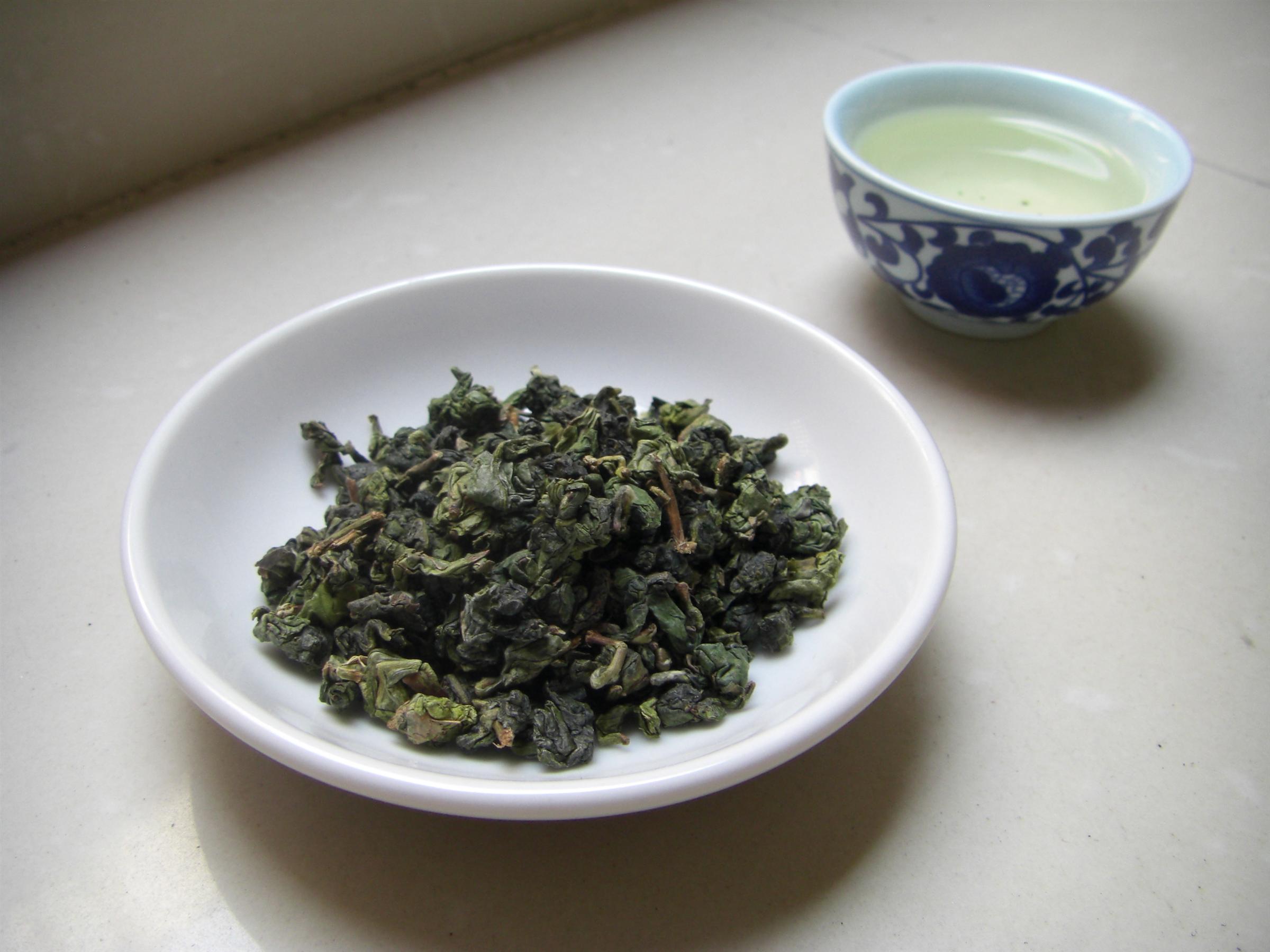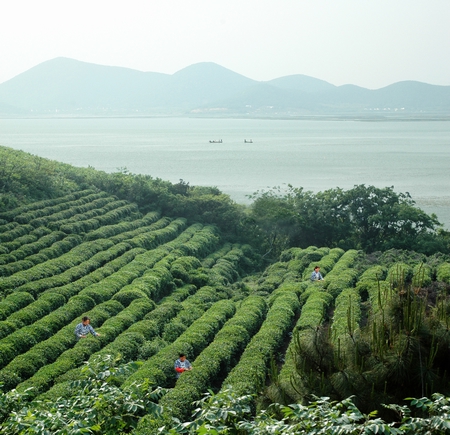|
Oolong
Oolong or Wulong (, ; ; , "black dragon" tea) is a traditional semi-oxidized Chinese tea (''Camellia sinensis)'' produced through a process that includes withering the leaves under strong sun and allowing some Enzymatic oxidation, oxidation to occur before curling and twisting.Zhongguo Chajing pp. 222–234, 271–282, 419–412, chief editor: Chen Zhongmao, publisher: Shanghai Wenhua Chubanshe (Shanghai Cultural Publishers) 1991. Most oolong teas, especially those of fine quality, involve unique tea plant cultivars that are exclusively used for particular varieties. The degree of oxidation, which is controlled by the length of time between picking and final drying, can range from 8% to 85% depending on the variety and production style. Oolong is especially popular in southeastern China and among ethnic Chinese in Southeast Asia, as is the Fujian preparation process known as the gongfu tea ceremony. Different styles of oolong tea can vary widely in flavor. They can be sweet and ... [...More Info...] [...Related Items...] OR: [Wikipedia] [Google] [Baidu] |
Dong Ding
Dong Ding (; pronounced ), also spelled Tung-ting, is an oolong tea from Taiwan. A translation of Dong Ding is "Frozen Summit" or "Icy Peak", and is the name of the mountain in Taiwan where the tea is cultivated. Those plants were brought to Taiwan from the Wuyi Mountains in China's Fujian Province about 150 years ago. Origin The Qingxin variety was brought from the Chinese city of Wuyi to Mount Dong Ding about 150 years ago. According to reports, the scholar Ling Fong Chi, while studying in Fujian, brought tea plants to the Meadow as souvenirs for his relatives. The climatic conditions at Dong Ding, including sunny days and foggy afternoons, proved to be ideal for growing tea, which contributed to the rapid popularity of this variety in Taiwan. Similar to Darjeeling or Pu-erh tea ''Pu'er'' or ''pu-erh'' is a variety of fermented tea traditionally produced in Yunnan Province, China. Pu- erh tea is made from the leaves of the Yunnan tea plant ''Camellia sinensis var. assa ... [...More Info...] [...Related Items...] OR: [Wikipedia] [Google] [Baidu] |
Tieguanyin2
''Tieguanyin'' (; Standard Chinese pronunciation ) is a variety of Chinese oolong tea that originated in the 19th century in Anxi in Fujian province. Tieguanyin produced in different areas of Anxi have different gastronomic characteristics. Name The tea is named after the Chinese Goddess of Mercy Guanyin, Guanyin is an embodiment of Avalokiteśvara Bodhisattva. Other spellings and names include "Ti Kuan Yin", "Tit Kwun Yum", "Ti Kwan Yin", "Iron Buddha", "Iron Goddess Oolong", and "Tea of the Iron Bodhisattva". It is also known in its abbreviated form as "TGY". Legends There are two legends behind this tea: Wei and Wang. Wei legend In Fujian's Anxi County, there was a run-down temple which held an iron statue of Guanyin, the Bodhisattva of Compassion. Every day on the walk to his tea fields, a poor farmer named Wei would pass by and reflect on the temple's worsening condition. "Something has to be done," he thought. Being poor, Wei did not have the means to repair the tem ... [...More Info...] [...Related Items...] OR: [Wikipedia] [Google] [Baidu] |
Chinese Tea
Chinese teas can be classified into six distinctive categories: White tea, white, Green tea, green, Yellow tea, yellow, Oolong tea, oolong, Black tea, black and Post-fermented tea, post-fermented. Others add categories for scented and compressed teas. All of these come from varieties of the ''Camellia sinensis'' plant. Most Chinese teas are cultivated and consumed in China. It is commonly available in Chinese restaurants and grocery shops worldwide. Green tea is the most common type of tea consumed in China, while black tea is the second most common. Within these main categories of tea are vast varieties of individual beverages. Some of the variations are due to different strains of the ''Camellia'' plant. However, the largest factor in the wide variations comes from differences in tea processing after the tea leaves are harvested. White and green teas are heat-treated () soon after picking to prevent redox, oxidation. Other differences come from variations in the processing steps. ... [...More Info...] [...Related Items...] OR: [Wikipedia] [Google] [Baidu] |
Tieguanyin
''Tieguanyin'' (; Standard Chinese pronunciation ) is a variety of Chinese oolong tea that originated in the 19th century in Anxi in Fujian province. Tieguanyin produced in different areas of Anxi have different gastronomic characteristics. Name The tea is named after the Chinese Goddess of Mercy Guanyin, Guanyin is an embodiment of Avalokiteśvara Bodhisattva. Other spellings and names include "Ti Kuan Yin", "Tit Kwun Yum", "Ti Kwan Yin", "Iron Buddha", "Iron Goddess Oolong", and "Tea of the Iron Bodhisattva". It is also known in its abbreviated form as "TGY". Legends There are two legends behind this tea: Wei and Wang. Wei legend In Fujian's Anxi County, there was a run-down temple which held an iron statue of Guanyin, the Bodhisattva of Compassion. Every day on the walk to his tea fields, a poor farmer named Wei would pass by and reflect on the temple's worsening condition. "Something has to be done," he thought. Being poor, Wei did not have the means to repair the ... [...More Info...] [...Related Items...] OR: [Wikipedia] [Google] [Baidu] |
Tea Processing
Tea processing is the method in which the leaves from the tea plant ''Camellia sinensis'' are transformed into the dried leaves for brewing tea. The categories of tea are distinguished by the processing they undergo. In its most general form, tea processing involves different manners and degrees of oxidation of the leaves, stopping the oxidation, forming the tea and drying it. The innate flavor of the dried tea leaves is determined by the type of cultivar of the tea bush, the quality of the plucked tea leaves, and the manner and quality of the production processing they undergo. After processing, a tea may be blended with other teas or mixed with flavourants to alter the flavor of the final tea. When producing black, pu'erh and oolong teas there is an additional purpose of processing: to encourage oxidization, which further develops flavour and aroma compounds. History The history of tea processing corresponds intimately with the role that tea played in Chinese society and th ... [...More Info...] [...Related Items...] OR: [Wikipedia] [Google] [Baidu] |
Rougui Tea
Rougui tea (; pronounced ) is a variety of the tea plant, commonly grown in the Wuyi Mountains and processed into oolong tea. The name literally means " cassia". The tea can be difficult to prepare, but its distinctive sweet aroma can be brought out up to 7 steepings. It was first developed during the Qing dynasty The Qing dynasty ( ), officially the Great Qing, was a Manchu-led Dynasties of China, imperial dynasty of China and an early modern empire in East Asia. The last imperial dynasty in Chinese history, the Qing dynasty was preceded by the .... Description This tea may be traditionally processed producing a dark dry leaf and a rich smell or processed according to new consumer standards, giving it a leaf of mixed color and a more fruity aroma. Image:Rou_Gui_Oolong_tea_leaf.jpg, Spring tea processed to new consumer standards Image:Rou_Gui_Oolong_tea_leaf_close.jpg, Spring tea processed to new consumer standards close up References Rou Gui on Babelca ... [...More Info...] [...Related Items...] OR: [Wikipedia] [Google] [Baidu] |
Shui Jin Gui Tea
Shui Jin Gui is a Wuyi oolong tea from Mount Wuyi, Fujian, China. Its name literally means 'golden water turtle'. The tea produces a bright green Green is the color between cyan and yellow on the visible spectrum. It is evoked by light which has a dominant wavelength of roughly 495570 nm. In subtractive color systems, used in painting and color printing, it is created by a com ... color when steeped and is much greener than most other Wuyi oolong teas. It is one of the '' Si Da Ming Cong'', the four famous teas of Wuyi.''The Way of Tea'', Lam Kam Cheun, et al. (2002). Gaia Books. . References Wuyi tea Oolong tea Chinese teas Chinese tea grown in Fujian Cultivars of tea grown in China {{Tea-stub ... [...More Info...] [...Related Items...] OR: [Wikipedia] [Google] [Baidu] |
China Famous Tea
This is a list of Chinese teas. Chinese tea is a beverage made from the leaves of tea plants (''Camellia sinensis'') and – depending on the type of tea – typically 60–100 °C hot water. Tea leaves are processed using traditional Chinese methods. Chinese tea is drunk throughout the day, including during meals, as a substitute for plain water, for health, or for simple pleasure. Chinese teas Types Growing areas * Cloud tea * Wuyi tea ("Bohea") Styles Infusions * Chrysanthemum tea * Gynostemma pentaphyllum * Kuding Tea varieties * 24 flavors — herbal * Anji bai cha — green * Baihao Yinzhen — white * Bai Jiguan tea, Bai Jiguan — oolong * Baimudan tea, Bai Mudan — white * Baimao Hou — green * Ban Tian Yao tea, Ban Tian Yao — oolong * Biluochun — green * Bu Zhi Chun tea, Bu Zhi Chun — oolong * Chun Mee — green * "Congou" — black * Dafang tea, Da Fang — green * Da Hong Pao — oolong * ... [...More Info...] [...Related Items...] OR: [Wikipedia] [Google] [Baidu] |
Tieluohan Tea
Tieluohan or Tie Luo Han (; pronounced ) is one of the Four Great Oolongs and a light Wuyi tea. Tieluohan is the cultivar responsible for one of the four best known ''Yán chá'', "rock teas" grown on cliffs in the Wuyi Mountains in northern Fujian Province, China. Legend tells that this tea was created by a powerful warrior monk with golden-bronze skin, hence the name ''Tieluohan'', which means "Iron Arhat In Buddhism, an ''Arhat'' () or ''Arahant'' (, 𑀅𑀭𑀳𑀦𑁆𑀢𑁆) is one who has gained insight into the true nature of existence and has achieved ''Nirvana (Buddhism), Nirvana'' and has been liberated from the Rebirth (Buddhism ..." or "Iron Warrior Monk". The color of the leaf is an intense green and the resulting tea is of a lighter color. The taste of the tea should be full-bodied and supple, with gentle floral notes and the traditional long-lasting finish. See also * Four Great Oolongs (Si Da Ming Cong) Wuyi tea Oolong tea Chinese teas ... [...More Info...] [...Related Items...] OR: [Wikipedia] [Google] [Baidu] |
Shui Xian
Shui Xian ( traditional/simplified Chinese: 水仙, pinyin: shuǐxiān) is a cultivar of ''Camellia sinensis'' (cv. ''Wuyi Narcissus'') as well as an oolong tea traditionally from the Wuyi Mountains in Fujian, China. The infused color is a deep amber which is characteristic for many other Wuyi oolong teas. This tea is also grown in Taiwan and Guangdong. Varieties * Lao Cong Shui Xian or Aged Shui Xian (): A Shui Xian made from old bushes that may be as old as 200 years. The taste and appearance will signify it as an even darker Oolong. According to Chen De Hua, Lao Cong Shui Xian refers to tea bushes that are at least 50 years old. These older bushes produce a distinct aroma, setting them apart from regular Shui Xian (also known as Da Zong Shui Xian). The unique fragrance, often called ‘Cong Wei,’ comes from the woody notes of the bush’s trunk and branches, combined with the surrounding environment’s ecological characteristics. * Zhangping Shui Xian (): A Shui Xian bush t ... [...More Info...] [...Related Items...] OR: [Wikipedia] [Google] [Baidu] |




